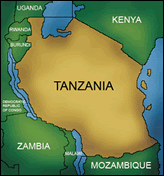HIV/HBV
and HIV/HCV Coinfected Patients in Africa Have Slower CD4 Recovery on
Antiretroviral Therapy, but Not Increased Mortality
 |
 |
 |
 |
 |
 |
 |
| SUMMARY:
HIV positive people coinfected with hepatitis B virus (HBV)
or hepatitis C virus (HCV) in Tanzania experienced slower
immunological recovery and significantly more liver toxicity
after starting antiretroviral
therapy (ART), but they nevertheless had a similar risk
of death, researchers reported at the 17th Conference on Retroviruses
& Opportunistic Infections (CROI
2010) last month in San Francisco. |
|
 |
 |
 |
 |
 |
 |
 |
By
Liz Highleyman
 Past
research indicates that HIV/HBV
and HIV/HCV coinfected
individuals, especially those with low CD4 cell counts typically
experience more rapid liver disease progression than those with viral
hepatitis alone. Studies of the effects of HBV
and HCV on HIV
disease progression have produced mixed data. Few such studies, however,
have been carried out in resource-limited settings where patients start
ART later on average.
Past
research indicates that HIV/HBV
and HIV/HCV coinfected
individuals, especially those with low CD4 cell counts typically
experience more rapid liver disease progression than those with viral
hepatitis alone. Studies of the effects of HBV
and HCV on HIV
disease progression have produced mixed data. Few such studies, however,
have been carried out in resource-limited settings where patients start
ART later on average.
A U.S./Tanzania
research collaboration conducted a prospective observational study looking
at the impact of coinfection on response.
As background,
they noted that the prevalence of HIV/HBV coinfection ranges from 4.4%
to 20.4%, and that of HIV/HCV coinfection from 3.3% to 5.0%, in sub-Saharan
Africa.
This analysis included nearly 5000 adult HIV positive patients enrolled
at 18 MDH PEPFAR HIV Care and Treatment clinics (Harvard's HIV/AIDS
program in Tanzania) between November 2004 and June 2008 who were starting
first-line ART containing a NNRTI and had been tested for hepatitis
B surface antigen and HCV antibodies. A majority (67%) were women.
The NNRTI nevirapine (Viramune), which is commonly used in developing
countries, has been associated with liver toxicity (hepatotoxicity)
in people with higher CD4 counts; this is less often the case with efavirenz
(Sustiva), the most widely used NNRTI in higher-income countries.
In this study, hepatotoxicity was defined as an ALT level between 3
and 5 times the upper limit of normal (ULN) (> 40 units/L). The median
follow-up time on ART was 14 months (range 1-54).
Results
 |
Among
4,935 patients, the prevalence of HIV/HBV coinfection was 6.5% (315
out of 4836). |
 |
The
prevalence of HIV/HCV coinfection in this group was lower, at 1.4%
(60 out of 4380). |
 |
2
patients triply infected with HIV/HBV/HCV were excluded from further
analysis. |
 |
Median
baseline ALT was significantly higher among HIV/HBV coinfected patients
compared to those with HIV alone (27 vs 21 units/L). |
 |
Median
baseline CD4 cell count, in contrast, was significantly lower among
the HIV/HBV coinfected participants (93 vs 123 cells/mm3). |
 |
The
HIV/HBV coinfected group also showed a trend towards more advanced
WHO stage HIV disease, but this did not reach statistical significance. |
 |
CD4
cell recovery over time was significantly slower among HIV/HBV and
HIV/HCV coinfected patients compared to those with only HIV. |
 |
The
risk of hepatotoxicity was significantly higher among HIV/HBV and
HIV/HCV coinfected patients compared to those with HIV alone. |
 |
Mortality,
however, was similar when comparing coinfected participants and
those with HIV alone: |
| |
 |
HIV/HBV
vs HIV only: 11.11% vs 7.98%, hazard ratio (HR) 1.28; |
 |
HIV/HCV
vs HIV only: 6.66% vs 6.73%; HR 1.07. |
|
Based
on these findings, the researchers concluded, "A slower rate of
immunologic recovery and higher risk of hepatotoxicity among this urban
Tanzanian cohort of HIV/HBV+ and HIV/HCV+ patients did not seem increase
risk of mortality."
They added
that the impact of coinfection on HIV virological outcomes needs to
be explored further.
MDH
HIV/AIDS Care and Treatment Program, Dar es Salaam, Tanzania; Harvard
Sch of Public Health, Boston, MA; Northwestern Univ, Chicago, IL; Muhimbili
Univ of Health and Allied Sci, Dar es Salaam, Tanzania.
3/5/10
Reference
B
Christian, J Okuma, Claudia Hawkins, and others. Prevalence of Hepatitis
B and C Co-infection and Response to Antiretroviral Therapy among HIV-infected
Patients in an Urban Setting in Tanzania. 17th Conference on Retroviruses
& Opportunistic Infections (CROI 2010). San Francisco. February
16-19, 2010. Abstract 694.